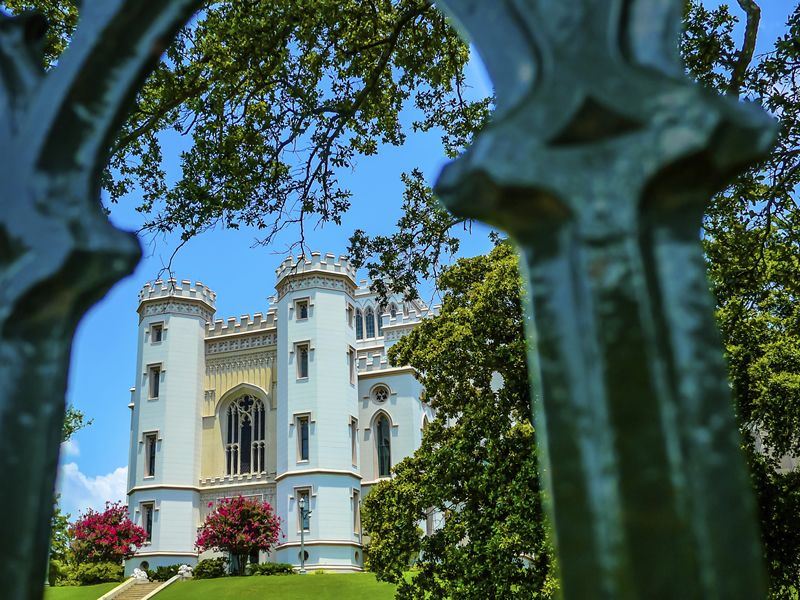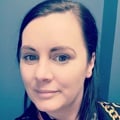A beginner's guide to Louisiana
Thanks to the state's French, Creole and Cajun heritage, Louisiana is a wonderful blend of ethnicity and cultural flair with a diverse array of food, music and architecture to be admired throughout the region. New Orleans is it’s most famous city and attracts visits from all corners of the world, so we’ll start there and then move through the state highlighting its other attractions.
The French Quarter New Orleans

New Orleans
Located in the south-east of the state either side of the Mississippi River, New Orleans is a melting pot of culture, cuisine and, most importantly, music.
The French Quarter is always a great place to start a tour of New Orleans as there is so much going on with a succession of landmarks and monuments showcasing the city's European heritage. Bourbon Street is famous for music and partying and its fun but not for the faint-hearted! Explore and you’ll find lots of less raucous live music venues, bars and restaurants in the neighbouring streets to enjoy the tastes and sounds of New Orleans.
The French Quarter at night

Set in the heart of the French Quarter, Jackson Square was declared a National Historic Landmark in 1960 – it is the site where in Louisiana was made United States territory after the Louisiana Purchase. The grand statue of General Jackson with St Louis Cathedral sitting behind, is a popular photo opportunity.
Jackson Square with St Louis Catheral in the background

Nearby is the Musical Legends Park - a small park dedicated to showcasing the rich cultural and musical heritage of the city, filled with life-sized bronze statues of New Orleans musicians and places to sit and enjoy the sights and sounds. The live music starts up around 10am every day and plays until closing time, and you’ll find Cafe Beignet here to enjoy coffee a beignet (delicious deep-fried choux pastry) while listening to the music.
Situated right next to Bourbon Street, Royal Street is New Orleans' local art hub, and where some of the city's most historic architecture can be found on this street. You find art galleries where visitors can find everything from sculptures to paintings to mixed media, as well as antique shops and boutiques.
Mardi Gras in New Orleans begins on Twelfth Night 6 January with the streets alive with music and costumed revellers, continuing until Shrove Tuesday when the parades roll all over town.
The vast National WWII Museum is worth a visit with highlights including a collection of restored WWII artifacts and an immersive exhibit known as the "Dog Tag Experience" that allows visitors to experience the emotions and sensations of going to war.
Streetcars are part of the history of New Orleans, and today they offer a great way to see and experience the charm of the city. There are three lines: the St. Charles line, the Canal Street line, and the Riverfront line. The St. Charles line is particularly popular with visitors as it begins at the edge of the French Quarter and offers views of leafy green streets, historic buildings, and a number of restaurants and boutiques. The one-way fare for any destination is only $1.25 (and exact change is required). Another way to see New Orleans is from the river and there are several options to take a riverboat cruise along the Mississippi.
Mississippi Riverboat Cruise

An hour west of New Orleans you will find these two gems:
Houmas House Plantation and Gardens was established in the late 1700s. The main house is known as the "Sugar Palace" and consists of 16 rooms filled with period furnishings and Louisiana artwork. You may recognise it if you’ve seen The Green Book as the house features in this film and the historic estate boasts 38 acres of the South's most beautiful gardens and a historic mansion open daily for tours.
Oak Alley Plantation, an hour west of New Orleans, is a historic sugarcane plantation located on the west bank of the Mississippi River. It’s named after the alley or canopied path created by a double row of southern live oak trees about 800 feet long. The trees were planted about 100 years before this beautiful Antebellum house was built for the head of a prominent Creole family to impress his new wife. You can enjoy a tour the Big House and the gardens, and experience what plantation life was like during the 1800s.
Oak Alley Plantation

Baton Rouge
Situated in the south-east of Louisiana, around 85 miles northwest of New Orleans, Baton Rouge is the state's capital and here are a few highlights of a visit to the city. A combination of university, rail road and legislative buildings have helped to put Baton Rouge on the US map when it comes to architecture with neo-gothic, art-deco, Italian renaissance and classic plantation mansions showcasing Louisiana's working heritage.
The USS KIDD Veterans Museum is located on the ship USS KIDD itself. The ship was never modernized and it is the only destroyer from World War II to retain its original appearance. You can walk the decks , explore the exhibits and visit the Louisiana Veterans Hall of Honor, which is dedicated to the Louisiana veterans who had an outstanding or unique military career.
The Louisiana State Capitol is located in downtown Baton Rouge, was inaugurated in 1932 and is the seat of government for the state of Louisiana. With 34 stories that total 450 feet, it is the highest building in the city and the tallest capitol in America. The building sits on 30 acres of gardens and there is an observation deck on the 27th floor that can be accessed via an elevator.
The Louisiana State Capitol

You can also visit the Old State Capitol, a striking Gothic-Revival castle standing high on a bluff over the Mississippi River, built in 1847. The castle was burned by the Union Army, and in 1882, it was repaired and served as the state capitol until 1932, when the new State Capitol building opened. Its worth a look even if you don’t visit the museum housed now housed within.
The Old State Capitol

Magnolia Mound was built in the last half of the 18th century and shows the architectural influences brought by early settlers from France and the West Indies. This Antebellum mansion still maintains much of its 18th- and 19th-century appearance and is surrounded by old oak trees.
The LSU Rural Life Museum presents the lifestyles and cultures of pre-industrial Louisiana. Highlights include Louisiana Folk Architecture, a collection of seven buildings that illustrate the various cultural influences of Louisiana's settlers. The Barn with items from prehistoric times to the 20th century and The Working Plantation, a complex of buildings furnished to reconstruct the activities of life on a 19th-century working plantation.
The building that houses the Louisiana Arts & Science Museum is a lovely old railroad depot located along the Mississippi River. It features a mix of art and science, with a little something for both adults and children. The art galleries include American and European art, ethnographic art, modern and contemporary art of Louisiana, photography and antiquities. The science portion of the museum is a fun area with interactive displays, and there’s also the creatively laid out Ancient Egypt Gallery, including mummies and other artifacts, and an on-site Planetarium.
View of Baton Rouge from the State Capitol

More Inspiration
Recommended holidays
















